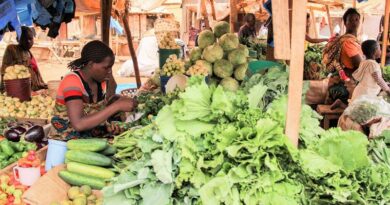CABI-led review of Soil Information Systems highlighted at Africa Fertilizer and Soil Health Summit
08 May 2024, Africa: A CABI-led review of national Soil Information Systems (SIS) in seven countries in Africa – as well as the USA, New Zealand, and Australia – has been highlighted at the Africa Fertilizer and Soil Health Summit held in Nairobi, Kenya.
The summit was held to deliberate on Africa’s recent widespread decades-long decline in soil quality of farmland – a phenomenon that negatively impacts upon the agricultural production capacity and food security of the continent.
It sought to bring together stakeholders to highlight the crucial role of fertilizer and soil health in stimulating sustainable pro-poor productivity growth in African agriculture and to agree on an African Fertilizer and Soil Health Action Plan, as well as the Soils Initiative for Africa (SIA).
The SIA will improve agricultural productivity, economic growth, sustainable livelihoods, water availability, a sustainable natural resource base, and adaptation and mitigation of climate change.
Framework for Sustainable SIS Intervention Design
Dr Martin Parr, CABI’s Director, Data Policy & Practice, moderated a side event at the summit, entitled ‘Strengthening National Soil Information Systems – A Framework for Sustainable SIS Intervention Design,’ which also included CABI Associate Dr Mariah Coley and Dr Lydiah Gatere, CABI’s Climate Change Expert for Africa.
They were joined by Thaïsa van der Woude, Project Manager at ISRIC – World Soil Information, before Dr Rodgers Kabiti, Principal Research Scientist at the Zambia Agricultural Research Institute (ZARI) who spoke about Zambia’s experience with the framework. Kiflu Gudeta, from the Ministry of Agriculture in Ethiopia, presented on the SIS experience in Ethiopia including the success factors and limitations.
Here CABI’s work, together with ISRIC on the Bill & Melinda Gates Foundation-funded project ‘Soil Information Systems Review: a process toward strengthening national soil information systems’ was explored to help take innovation to scale for SIS development.
A comprehensive review of several existing SISs was undertaken to understand what intervention approaches have worked, which have not, which solutions work best and where to take innovation to scale.
Four key aspects that are significant for a SIS to be successful
The project team interviewed SIS developers in nine countries to understand each country’s SIS enabling environment, focusing on several social, financial, and institutional aspects. The findings revealed four key aspects that are significant for a SIS to be successful.
These include the need to understand the value model for soil data and how it contributes to stakeholders’ decision processes, benchmarking new SIS initiatives on any ongoing related efforts and on existing and legacy soil data, building long-term buy-in among national partners, as well as supporting a SIS champion to coordinate across stakeholders.
Another key aspect is to match the technological design of the SIS with stakeholder needs and capacity building plans.
Dr Parr said, “The investments in data generation and infrastructure have enabled
large strides towards improving soil health and farmer livelihoods.
“Although the value of these assets and technologies are well-recognized by soil experts, there is a need to encourage greater intentionality and efficiency in the development of data assets, and to be more responsive and adaptive to local demand for soil information.
“National support, ownership of SIS development, and alignment with user needs can be improved in many existing SIS cases.”
He added that several constraints also limit the potential effectiveness of SIS interventions, including capacity gaps, data quality and standards, governance, sustained funding, data security and privacy, the national legal and policy environment, retaining human resources, technical infrastructure, and equipment.
Detailed review of methods, standards, and tools
The project has also developed a detailed review of methods, standards, and tools for all steps of the Soil Information Workflow to aid the design of a sustainable and user focused SIS that fits the enabling environment of a country.
These steps include data collection, laboratory analysis, soil archiving, data organisation, modelling, and mapping, applying the soil information and data and information serving.
Dr Coley said, “Using these insights, we are developing a framework that takes a human-centered approach to SIS intervention design and consists of practical steps and tools to guide the various stakeholders involved, such as soil data practitioners, SIS users and SIS producers, to ensure the development of a successful and sustainable SIS.
“We will be applying the framework in Zambia and Kenya to co-develop a roadmap for SIS development in close collaboration with the potential SIS owners. Insights from this process will then contribute to a refined replicable framework for SIS intervention design. This will lead to fit-for-purpose soil information solutions and, ultimately, greater impacts.”
Ultimately, the project aims to achieve six main goals including understanding the enabling environment for developing SISs, developing an evidence-based framework for improved SIS intervention design and communicating and discussing with the global soil data community.
Also Read: BASF Launches New Insecticide Efficon With Axalion Active Introduced Under IRAC Group 36
(For Latest Agriculture News & Updates, follow Krishak Jagat on Google News)















